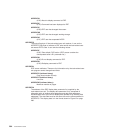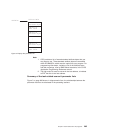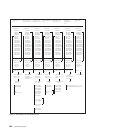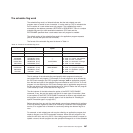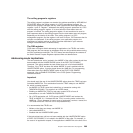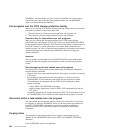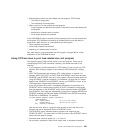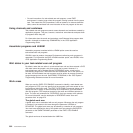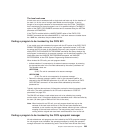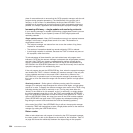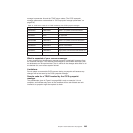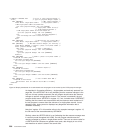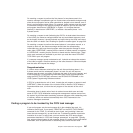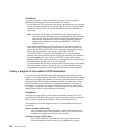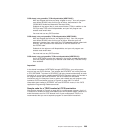v On each invocation of a task-related user exit program, a new EXEC
environment is created, even when the program is being invoked from the same
task. This means that CICS operations, such as browse of a resource definition
table, cannot be continued from one invocation of the exit program to the next.
Using channels and containers
Task-related user exit programs cannot access channels and containers created by
application programs. They can, however, create their own channels and pass them
to programs which they call.
For information about channels and containers, see Enhanced inter-program data
transfer: channels as modern-day COMMAREAs, in the CICS Application
Programming Guide.
Assembler programs and LEASM
Assembler programs translated with the LEASM option cannot be used as
task-related user exit programs.
LEASM is used to produce Language Environment conforming main programs in
assembler. For information about the LEASM translator option, see LEASM, in the
CICS Application Programming Guide.
Wait states in your task-related user exit program
By default, tasks that are active in a task-related user exit and have entered a CICS
wait state cannot be purged—only force purge can be used. However, if a
task-related user exit is enabled with the PURGEABLE option, a task can be
successfully purged from a wait within the task-related user exit. If this option is to
be used, the task-related user exit program must be written to process correctly a
purged response from the wait. See ENABLE PROGRAM, in the CICS System
Programming Reference manual for more information.
Work areas
When you use the EXEC CICS ENABLE command to identify a task-related user
exit program to CICS, you may specify that the program must have access to one
local and one global work area. The EXEC CICS ENABLE command allows you to
specify the size, in bytes, of the work areas to be acquired for your task-related
user exit program. CICS acquires storage for the areas and initializes pointers to
them. The user exit parameter list, DFHUEPAR, gives you access to the pointers.
For more information, see the description of DFHUEPAR under “User exit
parameter lists” on page 273.
The global work area
A global work area is associated with an exit program. Whenever the exit program
is invoked, it has access to the area through the parameter UEPGAA of
DFHUEPAR. The global work area may be shared by a number of exit programs.
You must have specified the size of the global work area using the GALENGTH
parameter or the GAENTRYNAME parameter of the EXEC CICS ENABLE
command.
The global work area is located below the 16MB line.
292 Customization Guide



